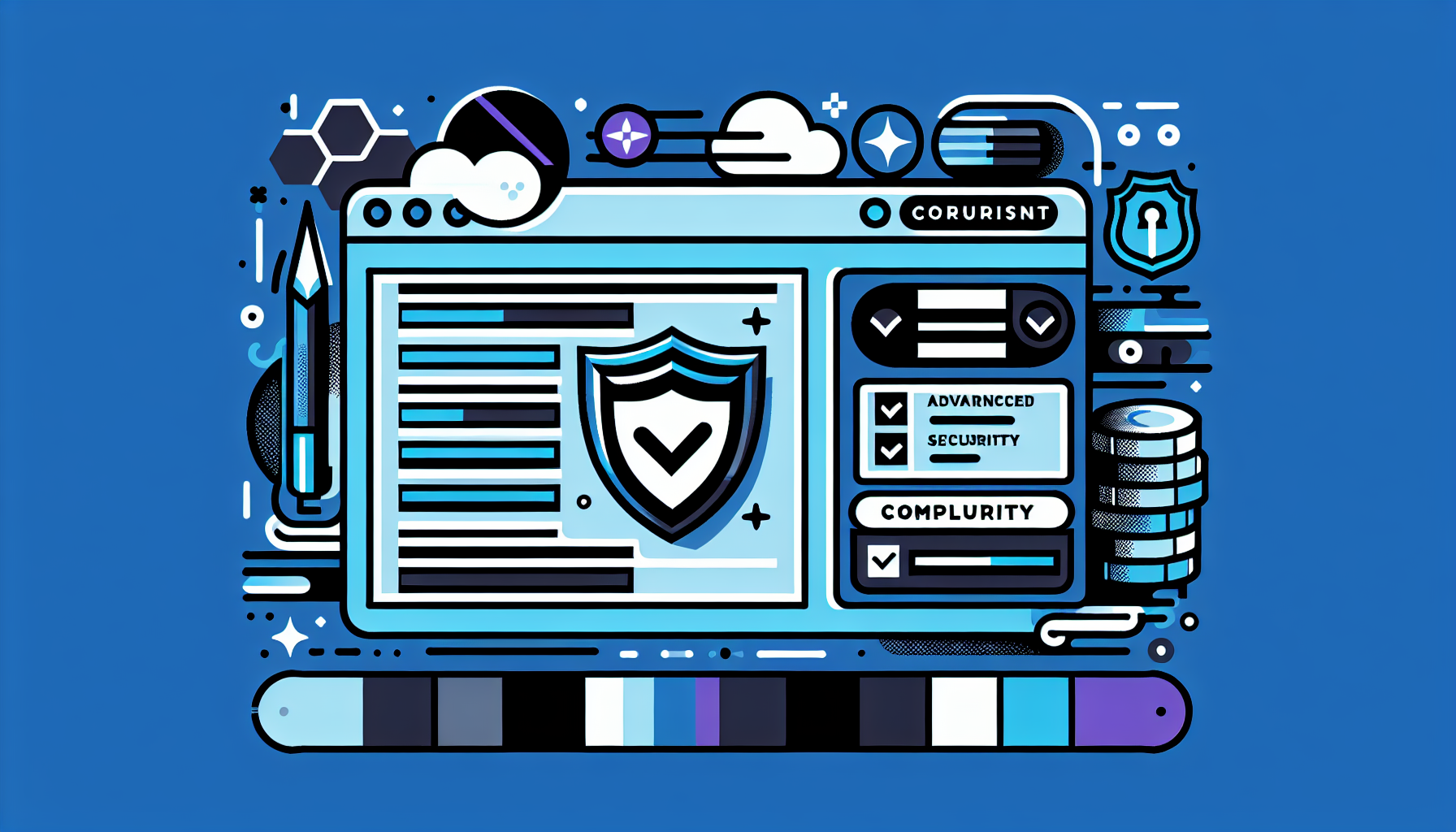CIS for WordPress: The Ultimate Guide to Securing Your Website
In today’s digital landscape, website security is paramount. For WordPress users, implementing CIS (Center for Internet Security) guidelines is a crucial step towards fortifying your online presence. This comprehensive guide will explore everything you need to know about CIS for WordPress, from its importance to implementation strategies and best practices.
What is CIS for WordPress?
CIS for WordPress refers to the implementation of security benchmarks and best practices developed by the Center for Internet Security specifically for WordPress websites. These guidelines are designed to enhance the security posture of WordPress installations, protect against common vulnerabilities, and ensure compliance with industry standards.
Why is CIS Important for WordPress?
WordPress powers over 40% of all websites on the internet, making it a prime target for cybercriminals. Implementing CIS benchmarks can significantly reduce your website’s attack surface and protect against a wide range of threats. Here are some key reasons why CIS is crucial for WordPress:
- Enhanced Security: CIS benchmarks provide a comprehensive security framework that addresses various aspects of WordPress security.
- Compliance: Many industries require adherence to specific security standards, and CIS benchmarks can help meet these requirements.
- Best Practices: CIS guidelines are developed by cybersecurity experts and represent industry-leading best practices.
- Risk Reduction: By following CIS recommendations, you can significantly reduce the risk of successful cyber attacks.
- Continuous Improvement: CIS regularly updates its benchmarks to address emerging threats and vulnerabilities.
Key Components of CIS for WordPress
CIS benchmarks for WordPress cover various aspects of website security. Let’s explore some of the critical components:
1. WordPress Core Security
CIS provides guidelines for securing the WordPress core installation, including:
- Keeping WordPress up-to-date
- Removing unnecessary default content
- Disabling XML-RPC if not needed
- Configuring proper file permissions
2. Plugin and Theme Security
Plugins and themes can introduce vulnerabilities if not properly managed. CIS recommends:
- Using only necessary and reputable plugins/themes
- Keeping all plugins and themes updated
- Removing inactive plugins and themes
- Implementing a plugin/theme vetting process
3. User Account Security
Proper user account management is crucial for WordPress security. CIS guidelines include:
- Implementing strong password policies
- Using unique admin usernames (avoid “admin”)
- Limiting user privileges based on roles
- Enabling two-factor authentication (2FA)
4. Database Security
Protecting your WordPress database is essential. CIS recommends:
- Using a strong, unique database prefix
- Regularly backing up the database
- Limiting database user privileges
- Encrypting sensitive data
5. Server-level Security
While not specific to WordPress, server-level security is crucial. CIS guidelines cover:
- Implementing a Web Application Firewall (WAF)
- Configuring proper server hardening
- Using HTTPS and SSL/TLS certificates
- Implementing intrusion detection and prevention systems
Implementing CIS for WordPress: A Step-by-Step Guide
Now that we understand the importance and components of CIS for WordPress, let’s explore how to implement these guidelines on your website:
Step 1: Conduct a Security Audit
Before implementing CIS guidelines, assess your current security posture. Use tools like Wordfence or Sucuri to perform a comprehensive security scan of your WordPress site.
Step 2: Update WordPress Core, Plugins, and Themes
Ensure that your WordPress installation, all active plugins, and themes are up-to-date. Remove any unnecessary or inactive plugins and themes.
Step 3: Implement Strong User Policies
Review and update user accounts:
- Change the default admin username
- Implement a strong password policy
- Enable two-factor authentication
- Review and adjust user roles and permissions
Step 4: Secure the WordPress Configuration
Make necessary changes to your wp-config.php file:
- Change the database prefix
- Disable file editing in the WordPress dashboard
- Enable automatic updates for minor releases
- Implement security keys and salts
Step 5: Enhance Server-level Security
Work with your hosting provider or server administrator to:
- Implement a Web Application Firewall
- Configure proper file permissions
- Enable HTTPS and obtain an SSL certificate
- Set up regular backups
Step 6: Monitor and Maintain
Implement ongoing security measures:
- Set up security monitoring and logging
- Regularly review and update security policies
- Conduct periodic security audits
- Stay informed about the latest WordPress security threats
Best Practices for CIS WordPress Security
To maximize the effectiveness of CIS for WordPress, consider these best practices:
1. Use Security Plugins
Leverage reputable security plugins like Wordfence, Sucuri, or iThemes Security to automate many CIS-recommended security measures.
2. Implement Least Privilege Principle
Grant users only the minimum level of access necessary to perform their tasks. This limits the potential damage if an account is compromised.
3. Regular Backups
Implement a robust backup strategy, including off-site backups, to ensure quick recovery in case of a security incident.
4. Security Headers
Implement security headers like Content Security Policy (CSP), X-Frame-Options, and X-XSS-Protection to enhance your site’s security posture.
5. Use a CDN
Content Delivery Networks (CDNs) like Cloudflare can provide additional security features and protect against DDoS attacks.
6. Educate Users
Provide security awareness training to all users with access to your WordPress site, emphasizing the importance of following security best practices.
Common Questions About CIS for WordPress
Q: How often should I review my WordPress security?
A: It’s recommended to conduct a thorough security review at least quarterly, with ongoing monitoring and updates as needed.
Q: Can I implement CIS guidelines on a shared hosting environment?
A: While some CIS recommendations may be limited by shared hosting restrictions, many can still be implemented. Work with your hosting provider to maximize security within your environment.
Q: Are CIS guidelines sufficient for e-commerce WordPress sites?
A: CIS guidelines provide a strong foundation, but e-commerce sites may require additional security measures, such as PCI DSS compliance for handling payment information.
Q: How do I stay updated on the latest CIS recommendations for WordPress?
A: Follow the official CIS website, join WordPress security forums, and subscribe to reputable WordPress security blogs to stay informed about the latest guidelines and threats.
Conclusion
Implementing CIS for WordPress is a crucial step in securing your website against cyber threats. By following these guidelines and best practices, you can significantly enhance your site’s security posture, protect your users’ data, and ensure compliance with industry standards.
Remember that security is an ongoing process, not a one-time task. Regularly review and update your security measures to stay ahead of evolving threats. By prioritizing CIS implementation for your WordPress site, you’re taking a proactive approach to cybersecurity that will benefit your organization in the long run.
For WordPress users looking to streamline their security implementation process, consider exploring tools like the Build It For Me WordPress Copilot. This AI-powered assistant can help you navigate complex security configurations and ensure your site aligns with CIS guidelines effortlessly.



